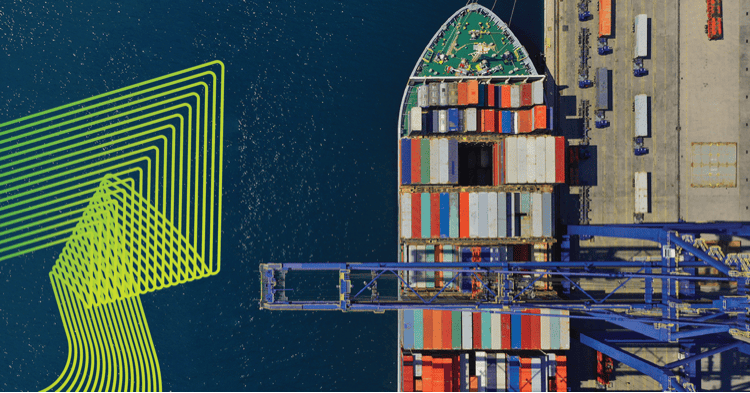Due to the multifaceted nature of modern threats, security teams need to be more diligent in their approaches to keep people, assets, operations, and reputations safer than ever before. While avoiding all obstacles is impossible, with proper planning and foresight, it is possible to craft proactive incident response plans that help ensure the minimization of negative impact when disruptive events occur.
Creating the right Proactive Incident Response for your organization is an important task and begins with understanding the specific potential challenges your individual organization might face. These issues may encompass challenges with the supply chain, environmental catastrophes, insider threats, and political uprisings. Understanding how outside issues, as well as possible internal challenges, can impact your organization is fundamental to creating the right threat mitigation plans.
Having this foundational knowledge, typically gleaned from risk assessment findings, is critical and will help security teams proactively create plans to ideally circumvent these problems and identify alternative back-up options when unavoidable disruptions do occur. The best security operations will prioritize incident response solutions and take the time to obtain the right intelligence to build the best plans.
Understanding the Landscape
An incident response solution encompasses more than just technical tools. It is the umbrella term for the planning for, identification of, and response to an unexpected event. It also entails the investigation and recovery from this disruption. Here are four considerations to a solid incident response solution:
Consideration #1: Choosing the Right Planning and Preparation Tools
There are a variety of planning and prep tools to guide security teams. These include both Incident Response Plan (IRP) development platforms and templates, as well as simulation and tabletop exercise platforms. Lastly, teams may consider utilizing risk assessment and vulnerability management tools, which support proactive identification of issues. Remember, proactive flagging of possible disruptions is the goal. If a disaster can be avoided, people are kept safe, and normal operations can continue. This is the true security team win.
Consideration #2: Choosing the Right Detection and Analysis Tools
There are a variety of platforms and technology tools to help security teams with detection of issues and the analysis of data obtained from these issues. These include:
- Security Information and Event Management (SIEM) systems offer teams the ability to combine event, threat, and risk data into a single system. This helps teams heighten their level of risk detection, as well as their ability to react appropriately and efficiently.
- Endpoint Detection and Response (EDR) solutions combine real-time continuous monitoring and collection of endpoint data to identify suspicious cyber activities on hosts and endpoints. It also automatically investigates issues as they arise by leveraging automation technology.
- Network Detection and Response (NDR) solutions continuously monitor organizations’ technology networks using non-signature-based tools and then flag issues to help security teams react accordingly to threats.
Threat intelligence platforms are key in honing in on what issues may be lurking down the road. Realizing what threats are likely to occur is essential in helping security teams plan ahead, prepare for risks and issues that are most likely to occur, and cultivate the most effective incident response plans to mitigate future attacks.
Consideration #3: Choosing the Right Containment and Eradication Tools
The types of containment and eradication tools vary and offer teams different benefits, but all focus on supporting security leaders in the identification of threats, isolating them, and eliminating them.
- Network segmentation and isolation tools help teams isolate activities to specific parts of the network. This is a very effective way to stop issues from spreading and typically will include tools such as firewalls and virtual area local networks (VLANs).
- Forensic analysis and data recovery tools are useful in instances where security teams need to recover lost systems or files. Organizations relying on data that was compromised may find these tools extremely useful for the preservation of critical business operations and the restoration of affected systems.
- Automation and orchestration platforms help teams ensure a rapid response to a security incident by minimizing strain on IT experts through automated responses.
Consideration #4: Choosing Post-Incident Activity and Improvement Tools
When the stress of a threat is over, teams are likely anxious to get back to their mission of identifying the next possible disruption. However, it is key to spend time investigating that recent incident, including writing proper reports and conducting thorough analysis. Learning from cyber security incidents will offer valuable insights, helping teams better mitigate similar risks in the future.
These four categories are deeply interconnected. Security teams that operate with a holistic approach will find the most success in not only flagging issues before they become full-fledged crises but also in creating plans that keep operations running despite disruptions.
A Step-by-Step Approach to Choosing the Right Solutions
To help security teams eliminate the stress of figuring out the best incident response process for their people, assets, and operations, here are seven steps that cut through the clutter:
- Define Your Needs and Requirements: Conduct a thorough assessment of your organization’s risk profile, regulatory obligations, and existing infrastructure.
- Research and Identify Potential Solutions: Explore different vendors and solutions based on your defined needs.
- Evaluate and Compare Solutions: Conduct demos, trials, and proof-of-concepts to assess the capabilities and suitability of different options.
- Consider Integration and Compatibility: Ensure chosen solutions integrate seamlessly with your existing security ecosystem.
- Assess Vendor Reliability and Support: Evaluate the vendor’s reputation, support services, and long-term vision.
- Develop a Phased Implementation Plan: Outline a clear plan for deploying and integrating the chosen solutions.
- Ongoing Monitoring, Testing, and Improvement: Emphasize the iterative nature of incident response services and the need for continuous evaluation and refinement.
Effective physical and cyber incident response solutions are paramount in today’s threat landscape. These seven steps are meant to assist incident response teams in choosing the right solutions. Following a clear process will help security teams accelerate threat detection and strengthen organizational resilience.
Investing in Resilience for a Secure Future
Today’s global business environment is full of risk. Incidents occurring in one part of the world impact activities elsewhere, and organizations must be more diligent than ever to avoid both physical and cyber attacks.
The most effective ways to do this involve leveraging predictive insights, scenario planning, and building resilience. It is no longer enough to monitor news feeds and track breaking news. There is so much data available to help forecast and prevent issues before they arise.
Tools designed specifically to serve organizations predictive insights about potential future events and their impacts, such as Seerist, are transforming how security teams operate. Staying ahead of disruptions in today’s volatile geopolitical environment is nearly impossible without the expertise of third-party security incident response experts.
These same tools assist in scenario planning by funneling predictive insights into targeted response scenarios and simulations. They offer massive advantages to incident response teams looking to reinforce their mitigation efforts. Additionally, Seerist provides proactive risk intelligence, significantly enhancing organizations’ resilience and helping them recover swiftly from any security breach.
For teams looking to take the next step in evaluating their organization’s incident response capabilities, schedule a demo with Seerist. See firsthand how easy it can be to forecast issues, receive predictive insights directly to your inbox or dashboard, and start cultivating a culture of true resilience and proactive threat detection.
Frequently Asked Questions (FAQ)
What is cyber risk, and how can organizations better manage it?
Cyber risk refers to the potential for financial loss, operational disruption, or reputational damage due to failures in information technology systems. Organizations can manage cyber risk more effectively by leveraging physical and cyber incident response services, adopting proactive security tools, and prioritizing ongoing monitoring and response efforts.
How can organizations prepare for future incidents?
Preparing for future incidents requires a combination of risk assessment, predictive intelligence, and scenario planning. Addressing both common threats and emerging threats ensures that organizations can build resilient systems and response plans that are flexible enough to adapt to evolving risks.
What role does incident investigation play after a disruption?
Incident investigation is critical to fully understanding how a security event occurred and which affected systems were compromised. Conducting a thorough post incident review not only reveals vulnerabilities but also provides actionable insights for strengthening defenses against future attacks.
Why is it important to defend against advanced persistent threats?
Advanced persistent threats are highly sophisticated, long-term cyberattacks often carried out by organized threat actors. These threats target sensitive data and critical systems, requiring continuous monitoring, rapid incident detection, and advanced countermeasures to neutralize them before significant damage is done.
What are threat actors, and how can teams guard against them?
Threat actors are individuals or groups that deliberately seek to exploit vulnerabilities for personal, political, or financial gain. Building strong defenses, investing in ongoing training for security analysts, and implementing layered security strategies can help guard against these persistent adversaries.
How can companies reduce the impact of data breaches?
To reduce the impact of data breaches, organizations must act quickly to detect, contain, and remediate incidents while ensuring minimal business disruption. This involves isolating compromised systems, protecting sensitive data, and communicating transparently with stakeholders to maintain trust.
How do physical and cyber incident response services enhance organizational security?
Physical and cyber incident response services provide access to incident response experts and specialized support, helping organizations accelerate threat detection, strengthen defenses, and respond effectively to security events. These services also assist with post-incident analysis and future preparedness efforts.






